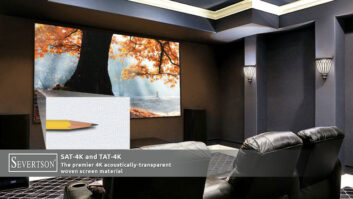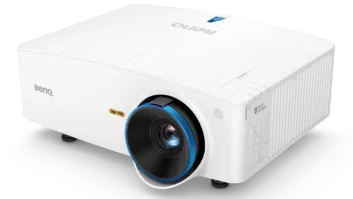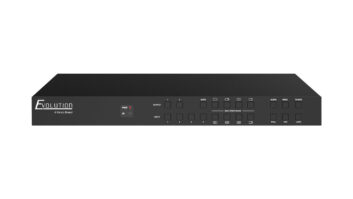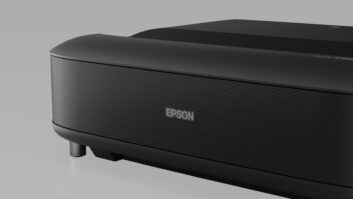The UHD Alliance (UHDA) came to CES with performance criteria that Ultra HD TVs and content must meet to deliver what the alliance calls a premium 4K experience.
The first alliance-certified TVs will appear at the show, with shipments starting soon after, said Victor Matsuda, vice chairman of the multi-industry alliance. Certified 4K Blu-ray discs will also be announced at the show, he added. It wasn’t certain when certified streaming content would be announced.
The certification process began before the show, and the alliance has designated multiple independent centers around the world to do the testing, Matsuda said.
Certified 4K discs could be available in time for the launch of certified TVs and 4K Blu-ray players in the coming months, another alliance member said in late December.
The association also introduced a logo that will appear on certified content and TVs so consumers can “easily identify the best possible Ultra HD experience,” Matsuda said. The Ultra HD Premium logo is reserved for products and services that comply with the group’s minimum requirements for resolution, bit depth, high dynamic range (HDR), peak luminance, black levels, and wide color gamut, among other things, he said.
The alliance set criteria for content mastering as well as content-distribution methods, such as 4K Blu-ray discs, 4K streaming and downloads, and other distribution methods that could include pay TV providers and broadcast TV. “The attributes are agnostic no matter how the content is distributed,” one alliance member said. The requirements apply regardless of distribution method, although “there can be differences in quality based on throughput,” he added.
All 4K Blu-ray players by definition will meet the alliance’s criteria because of the 4K Blu-ray spec’s high performance levels, the member noted. “4K Blu-ray will deliver it all,” he noted.
Color gamut: For TVs, one key criteria is a wide-color-gamut display capable of reproducing more than 90 percent of the P3 color range, which is the standard used by digital cinemas. P3 delivers 46 percent of the colors that the human eye perceives, said quantum-dot display supplier QD Vision.
The TVs must also be capable of accepting the ITU’s Rec. 2020 input-signal interface standard, which accommodates an even wider color gamut. “There’s a difference between the [Rec. 2020] interface standard, or container, and the display rendering,” a spokesman told TWICE. “To ensure interoperability, the content will be formatted in Rec. 2020, passed through distribution this way, and the displays will be able to understand such signal,” the spokesman told TWICE.
The use of Rec. 2020, however, will also enable some step-up TVs with better displays to display content mastered with a gamut exceeding the display minimum.
HDR: For certified TVs, the criteria allow for a choice of two HDR ranges. The ranges are measured in nits, or candelas per square meter, each with a different minimum black level and different peak brightness level. The two ranges accommodate LCD displays and OLED displays. The latter deliver deeper blacks than LCD displays but aren’t as bright as LCD displays.
Also to meet alliance requirements, HDR systems must use SMPTE’s 2084 EOTF (Electro-Optical Transfer Function) standard, the spokesman added. Compliant systems include Dolby Vision, HDR10 as defined by CTA, and “any systems supported by Ultra HD Blu-ray,” which are also based on 2084, he said. EOTF turns digital code into light.
Mastering, distribution: On the mastering and distribution side, one requirement is that content masters and distribution channels use the Rec. 2020 color-gamut “container,” 3,840 by 2,160 resolution, and minimum 10-bit signal. The alliance, however, is not requiring a minimum gamut or minimum dynamic range for the content master so as not to constrain the creative vision of the content producer, the spokesman said. The alliance, however, “recommends” that any mastering display support at least 100 percent of P3 gamut, peak brightness of more than 1,000 nits, and a black level of less than 0.03 nits, the spokesman said.












